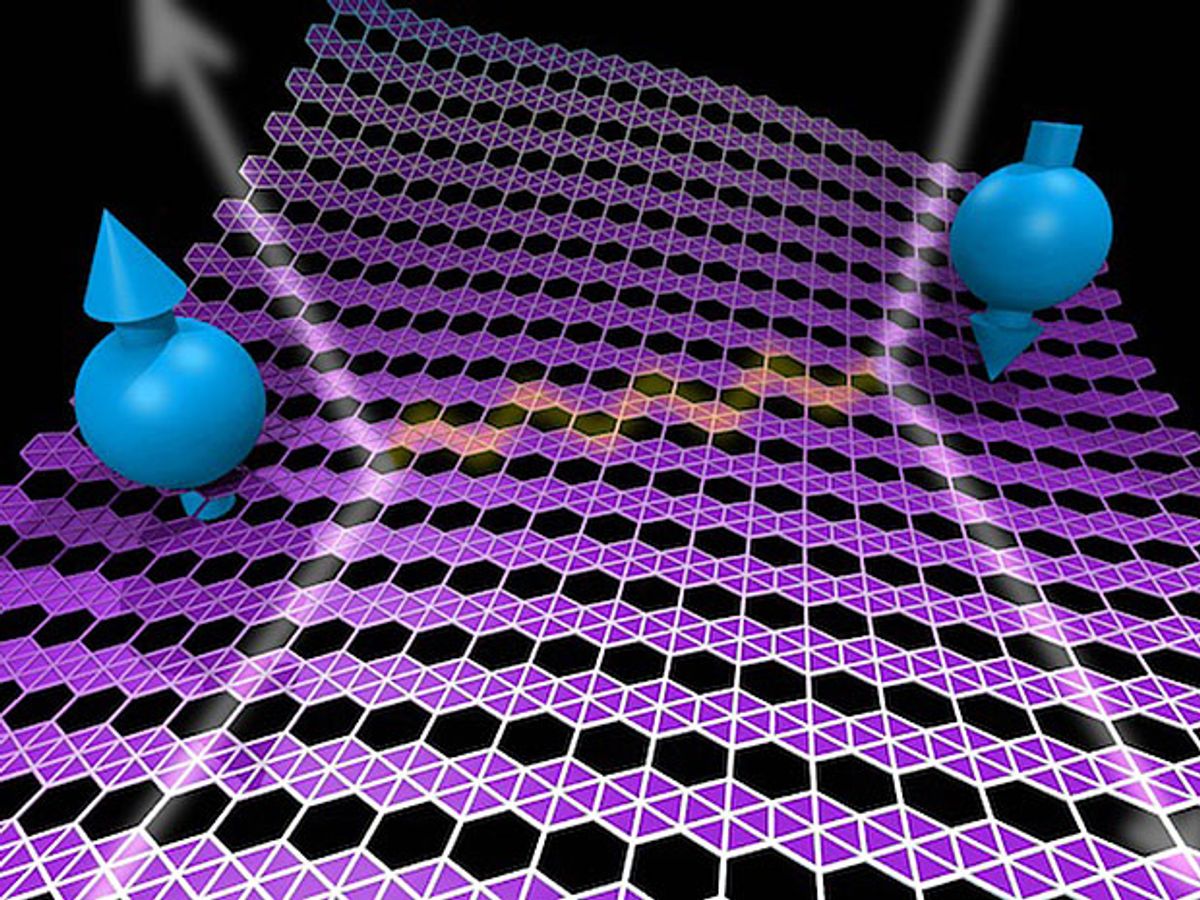Just as we were getting confirmation that graphene could be coaxed into behaving as a superconductor, we now get research out of Rice University indicating that the two-dimensional version of boron may be the only flatlands material that is an intrinsic superconductor.
Researchers at Rice, led by Boris Yakobson, have used computer calculations to determine that boron is a natural low-temperature superconductor, and may, in fact, be the only 2-D material with this intrinsic property.
Single-atom-thick sheets of boron—sometimes referred to as “borophene” in in a nod to their carbon cousin, graphene—have long been theorized, but have only just recently been produced in labs. In the short time labs have been turning out the material, its properties have begun to outshine graphene.
And once 2-D boron made its real world debut, the Rice researchers began analyzing its electronic structure. In a paper published in the journal ACS Nano, they reported the results of their first-principles analysis. The upshot: They predict that a one-atom-thick sheet of boron should achieve superconductivity at 10 to 20 Kelvin (between -250 and -260 degrees Celsius).
While there are other materials—including graphene—that can achieve superconductivity at these lower temperatures, boron has a couple advantages over the others.
“Its in-plane stiffness is high, about half of graphene's, but it is very flexible; its bending rigidity is just a fraction of graphene's,” said Evgeni Penev, a research scientist in the Yakobson group, in an e-mail interview with IEEE Spectrum.“Another advantage of boron is that it is a very light element (lightest among possible 2-D materials), with strong interatomic bonding. These properties are favorable for a material to have a higher critical temperature.”
Penev believes that the immediate benefits of having a truly 2-D, conventional superconductor will come from a clearer picture of the fundamental physics of superconductivity in such materials.
“Even nowadays, fully understanding the nature of the metallic state in a 2-D system is still challenging,” said Penev. “2-D boron may offer a rare chance to study how metallicity and conventional superconductivity occur and behave in the 2-D limit, for an elemental material.”
Of course, these calculations still need to be validated in the real world. According to Penev, this would involve more lab work like low-temperature measurements of resistivity as a function of temperature.
“We are a theoretical group, but we would be more than happy to collaborate with experimental teams interested in probing 2-D boron for possible conventional superconductivity,” said Penev.
Meanwhile, some of the 2-D boron the researchers have been working with exhibits really interesting features in its electronic structure and vibrational spectra, suggesting existence of other important properties. Penev added: “This is something we may pursue in the future.”
Dexter Johnson is a contributing editor at IEEE Spectrum, with a focus on nanotechnology.



